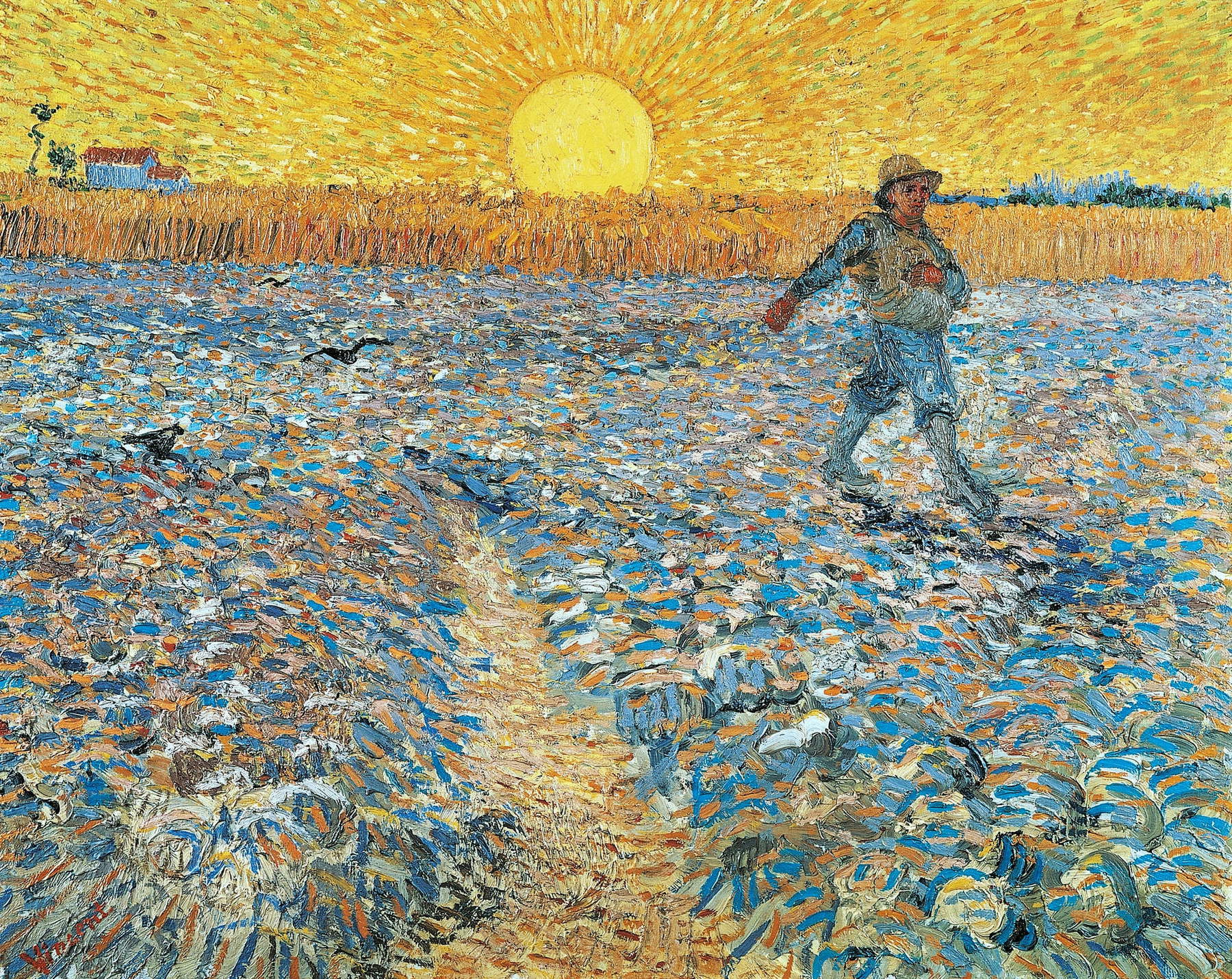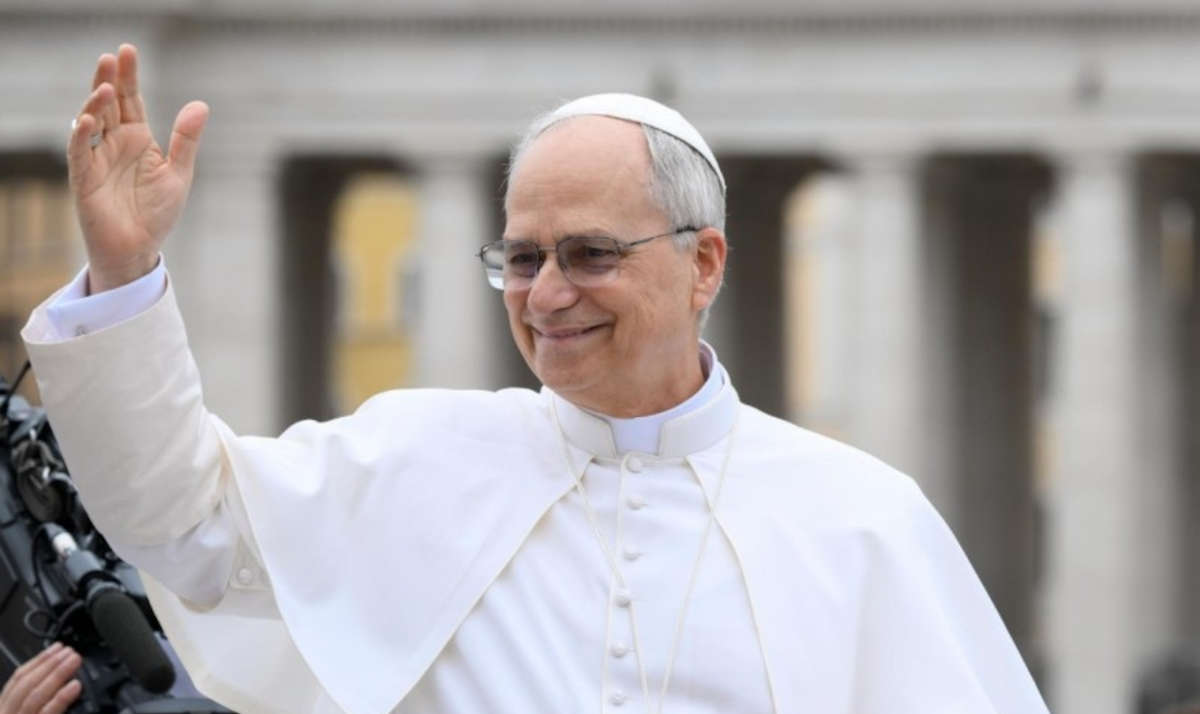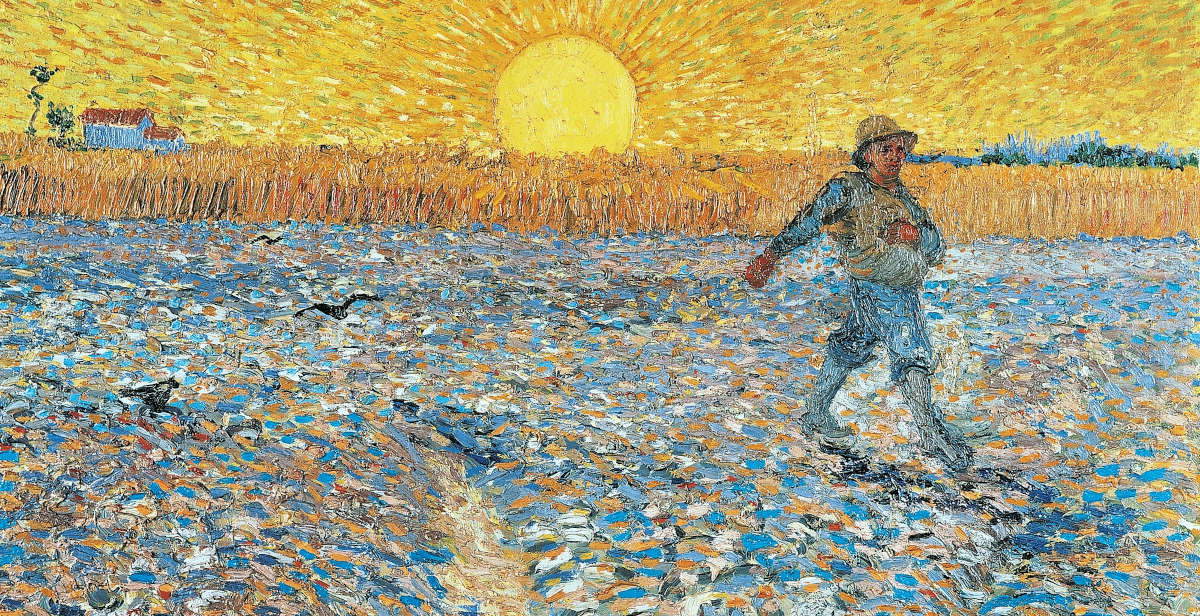Pope Leo XIV quotes Vincent van Gogh in his first audience: it was with a reference to the Sower at Sunset, an 1888 masterpiece preserved at the Kröller-Müller Museum in Otterlo, Netherlands (it was recently on display in Italy at the Van Gogh exhibition in Rome and the one in Trieste), that the U.S. pope, born Robert Francis Prevost, concluded, onday before yesterday, Wednesday, May 21, his first general audience, in St. Peter’s Square, during which the new pontiff resumed the cycle of Jubilee catecheses on the theme “Jesus Christ Our Hope begun by Pope Francis.”
Topic of the audience was the parable of the sower (Gospel of Matthew), presented by Leo XIV as a key to understanding the way Jesus communicates, and how the word of God acts in people’s lives. The sower, who sows the seed without distinguishing between soils, represents the generous and gratuitous love of God, who offers his word to all, regardless of the conditions of the “soil” (i.e., the human heart, the world, the Church). The seed, on the other hand, is the word of God, but also Jesus himself, who must “die” like the seed in the ground in order to bear fruit. The parable invites us to hope: even when life seems barren or inhospitable, God continues to sow with confidence, expecting that sooner or later something good will spring forth.


The image of Van Gogh’s painting, “The Sower at Sunset,” was used by Leo XIV to reinforce this message of hope and trust in God’s mysterious work. "I have in mind that beautiful painting by Van Gogh: The Sower at Sunset,“ the pontiff said. ”That image of the sower under the scorching sun also speaks to me of the toil of the farmer. And it strikes me that behind the sower, Van Gogh depicted the grain already ripe. It really seems to me an image of hope: one way or another, the seed has borne fruit. We are not sure how, but it has. At the center of the scene, however, is not the sower, who stands to the side, but the whole painting is dominated by the image of the sun, perhaps to remind us that it is God who moves history, even if he sometimes seems absent or distant. It is the sun that warms the clods of the earth and ripens the seed."
The Sower at Sunset is one of Van Gogh’s most famous works: the artist made it in June 1888 in Provence, inspired by works of similar subject matter by Jean-François Millet. We know the work’s date because it is the artist himself, in a letter to his brother Theo, who refers to the painting, “I had a week of intense and breathless work in the wheat fields in bright sunshine. The result was studies of wheat, landscapes and a sketch of a sower. On a plowed field there is a long strip of purple clods of earth and on the horizon a blue and white sower stands out. On the horizon line of the field, short ripe wheat. Over all this, yellow sky with yellow sun. From the simple nomenclature of these shades, you can see that color plays a very important part in this composition.”
The painting depicts a farmer sowing seeds in a plowed field, illuminated by a setting sun. The sower advances to the right, scattering seeds with his right hand while holding a sack over his shoulder with his left. He wears work clothes and a hat to protect him from the sun. The ground is covered with clods, and some birds approach to feed on the newly fallen seeds. In the background, golden ears of corn not yet reaped, trees and a small house can be glimpsed. In the center, a large sun illuminates the entire scene with yellow. Van Gogh attributed deep symbolic meaning to the sower: in fact, more than 30 of his works, including paintings and drawings, on this figure are known. The Dutch artist saw the sower as a figure representing the labor of the artist and hope in life: even, in a painting depicting a sower preserved at the Van Gogh Museum in Amsterdam, the sun is placed behind the figure of the farmer, as if it were the halo of a saint. It is Van Gogh himself who ascribes an almost mystical significance to the figure of the sower, since, again in his letters, an opposition can be found between the farmer who mows (which to Van Gogh suggests an idea of death) and the sower who is instead associated with life.
The act of sowing symbolizes the spread of life and hope, while the setting sun represents the divine light that guides and illuminates human labor. The work of the farmer was then considered by Van Gogh as an allegory of the cycles of life, the repetition of months and seasons, and thus a symbol of the eternity of life. But that is not all. “In the Gospel parable,” Andrea Dall’Asta, director of the San Fedele Museum in Milan, wrote in Avvenire, “the confidence of the sower who sows the seed despite being aware that much seed will be lost in unsuitable soil is striking. However, he is animated by the confidence that the seed dropped in good soil will bear much fruit. In van Gogh’s canvas, on the horizon the wheat is already ripe. It is as if the painter represents the farmer’s desire to see the fruit of his labor while he is still sowing and as evening falls. That golden grain is a promise. Confidence in the fruitfulness of life seems to prevail, even as the lights fail and the sun appears to fade on the horizon. In van Gogh’s canvas, the sacred is dropped into the everyday: a farmer’s gesture becomes a hymn to life.”
 |
| Pope Leo XIV quotes Van Gogh during his first general audience |
Warning: the translation into English of the original Italian article was created using automatic tools. We undertake to review all articles, but we do not guarantee the total absence of inaccuracies in the translation due to the program. You can find the original by clicking on the ITA button. If you find any mistake,please contact us.